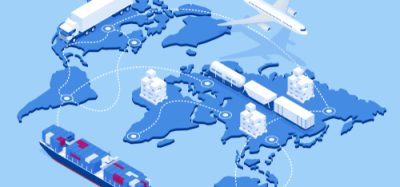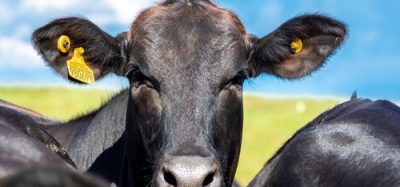Over and above quotas
Posted: 6 November 2012 | Mike Mitchell, Director of Quality and Corporate Responsibility, Young’s Seafood | No comments yet
The subject of sustainable seafood seems to be continually in the news. In this short article, we look at how today’s seafood brands and processors are rising to the challenge, we discuss why good marine stewardship is important and explore why future growth of the seafood market depends on factors above and beyond the control of fishing quotas.
It is important to see seafood sustainability as part of a holistic food sustainability agenda and to recognise that whilst capture fisheries face some very particular challenges, they are by no means unique. All forms of food production carry environmental impacts.
Terrestrial agriculture has, over centuries, significantly modified the natural environment and has been responsible for major losses of biodiversity. Because this has happened over many generations, and we accept that food production is of fundamental importance to society, we tend to view terrestrial agriculture as a worthy use of our natural capital. Indeed, some highly modified natural environments in the United Kingdom are now designated as National Parks or considered to be ‘Areas of Outstanding Natural Beauty’.
The subject of sustainable seafood seems to be continually in the news. In this short article, we look at how today’s seafood brands and processors are rising to the challenge, we discuss why good marine stewardship is important and explore why future growth of the seafood market depends on factors above and beyond the control of fishing quotas. It is important to see seafood sustainability as part of a holistic food sustainability agenda and to recognise that whilst capture fisheries face some very particular challenges, they are by no means unique. All forms of food production carry environmental impacts. Terrestrial agriculture has, over centuries, significantly modified the natural environment and has been responsible for major losses of biodiversity. Because this has happened over many generations, and we accept that food production is of fundamental importance to society, we tend to view terrestrial agriculture as a worthy use of our natural capital. Indeed, some highly modified natural environments in the United Kingdom are now designated as National Parks or considered to be ‘Areas of Outstanding Natural Beauty’.
The subject of sustainable seafood seems to be continually in the news. In this short article, we look at how today’s seafood brands and processors are rising to the challenge, we discuss why good marine stewardship is important and explore why future growth of the seafood market depends on factors above and beyond the control of fishing quotas.
It is important to see seafood sustainability as part of a holistic food sustainability agenda and to recognise that whilst capture fisheries face some very particular challenges, they are by no means unique. All forms of food production carry environmental impacts.
Terrestrial agriculture has, over centuries, significantly modified the natural environment and has been responsible for major losses of biodiversity. Because this has happened over many generations, and we accept that food production is of fundamental importance to society, we tend to view terrestrial agriculture as a worthy use of our natural capital. Indeed, some highly modified natural environments in the United Kingdom are now designated as National Parks or considered to be ‘Areas of Outstanding Natural Beauty’.
As with terrestrial farming, the harvesting of the sea has caused changes to the natural environment. Without doubt, anthropogenic impacts on wild fish populations and natural habitats have resulted in reduced abundance for a number of wild aquatic animals. In some extreme cases, this has even resulted in significant shifts in the trophic order.
However, unlike terrestrial farming which seeks to entirely replace the natural environment with a mono-cultural landscape populated by yield-efficient modified organisms, wild capture fishing aims to maximise harvests from extant natural fauna. Unlike terrestrial farming systems, the productivity of the sea is best served by the protection of biodiversity and of natural habitats, rather than their destruction.
The European Union recently adopted the management target of Maximum Sustainable Yield (MSY) and recognised the need to understand the eco-system impacts of fisheries. We are moving towards a paradigm in European fishery management that respects the long term productivity of the resource through the protection of biodiversity and the allocation of quotas proportionate to the productivity of the stock. These are the fundamental propositions of responsible fishing.
Irresponsible fishing for short-term advantage is unsustainable because it reduces spawning biomass and thereby jeopardises future harvests for fishermen. Irresponsible fishing can also cause habitat loss, which impairs the natural lifecycle of the animals. Irresponsible fishing is both counterintuitive and counter – productive to the long-term productivity of the sea and, consequently, the longevity of fishing and food processing businesses.
Overfishing and destructive fishing methods are largely driven by two factors; the short term pursuit of profit, and the basic economic imperative of subsistence. In a civilised society, illegal fishing should not be tolerated and these factors should be addressed in a different way, which is sustainable for the long-term.
With modern statistical fishery science comes an increased understanding of humanity’s impact on the aquatic environment. With this knowledge comes an increased social responsibility for stewardship. In accepting societal responsibility for the aquatic environment, we need to be cognisant of the fundamental acceptance of our need to harvest the sea and that, as with terrestrial farming, this will inevitably cause some changes to habitat and biodiversity beneath the waves. It is of paramount importance that those changes are both measurable and managed.
According to the FAO (The State of World Fisheries and Aquaculture, Food and Agriculture Organisation of the United Nations), over the last decade, wild capture fishing has consistently generated somewhere in the region of 90,000,000 tonnes of protein every year. Now with the rapid growth of fish farming, we are seeing a further 50,000,000 tonnes derived from aquatic farming or ‘aquaculture’. Against the background of a growing global population, this is a significant contribution towards the world’s dietary protein requirements and highlights the importance of good marine stewardship to protect and to grow the food potential of the planet.
Whilst some of the world’s largest commercial fisheries are very sustainably managed, it is undeniable that there are still some species and specific populations of fish that are being overfished. The UK retail environment for seafood recognises the need to avoid these over exploited fisheries and to source from sustainable fisheries – but it also recognises the need to stimulate drivers for positive change in fisheries that are currently in need of improvement.
Over the last decade, the UK retailers have increasingly centred their buying policies around the fisheries where biomass and fishing mortality levels meet the management targets and where the fishing methods deployed have well-understood and acceptable interactions with sub aquatic natural environments. In more recent years, there has been a realisation that the market can create incentives for improve – ment in those fisheries where change is needed and that simply walking away from an issue in need of change and innovation may indeed be the least responsible course of action available. Through our Fish for Life programme, we play an active role in encouraging and supporting sustainable practice and improvement through our supply chain.
Now ‘Fisheries in Transition’ (FIT) or ‘Fishery Improvement Partnerships’ (FIP) are becoming important tools for many major brands and seafood retailers, especially those that recognise the convening power of the market and that commercial opportunity and nature conservation do not necessarily have to be polar opposite or conflicting energies. Under FIT or FIP programs, the industry has the opportunity to engage with fisheries and species that may not otherwise meet with ENGO approval and through working in open and transparent collaboration with multi-stakeholder groups, make improvements to the management, fishery practice and the scientific understanding of those fisheries. By bringing new fisheries into acceptable green ratings status, we are able to increase the availability of supply to the market.
In all of our endeavours to increase the harvests from the sea, we recognise that because future food security demands of us to take those harvests in perpetuity and not just today, the cropping of the sea must be in constant harmony with nature’s own capability to replenish itself.
Seafood is not unique in the finite nature of its productivity. All forms of human food production are finite and are limited in accordance with such factors as the availability of arable land and fresh water. Because of this, food is a precious commodity, and because we undervalue food, we treat it without appropriate care and consideration – we over consume it and we waste it.
The societal focus on reducing food waste will take on increased importance in the future. Whilst the waste of seafood is no more or less heinous than the waste of other forms of food, it can be perceived so, perhaps because it is the only major source of human food protein that is still captured from the wild. Fish is the last great hunted resource.
The discarding of fish at sea is seen as a major source of food waste. The causal factors of discarding are numerous, but they are almost certainly avoidable and must be eliminated. This has become the focus of high profile media and political debate and we now see Europe slowly edging towards some solutions to this thorny issue. But the discarding of fish at sea is not the only wasteful practice that impacts on the availability of this valuable source of protein. The availability of seafood could be further enhanced through more efficient recovery of good quality, human food grade edible protein from each animal; this is an important means of maximising the utilisation of this finite resource.
High yield recovery is currently challenged by a number of factors. Some of these are fishery related, such as so-called ‘Olympic’ fishing, a form of seasonal management that permits fishing activity only for brief periods of time. Short windows of fishing opportunity incent – ivise rapid primary processing on board the processor vessels and reduce the recovery rates of edible protein. Unrecovered flesh is disposed of along with the heads, viscera and skeletons and is often dumped over the side of vessels into the sea.
Other causes of inefficient yield recovery are related to the onshore food processing industry. Inefficient filleting methods and the partial human food use of fillet material (and the arising by-products) can reduce the food opportunity from each individual animal. In response to this challenge, the onshore processing sector has sought to identify better means of removing flesh from the skeleton and to find good quality human food uses for every part of the fish fillet.
Yield improvements can be achieved by a number of methods, one of the principle means being to move away from machine filleting towards hand filleting. A skilled hand filleter can recover double digit higher yields than standard machine processed fish.
Another means of improving the food yield from fish is through investment in new mechanisation technologies such as those utilising video imaging systems and adaptive robotics. Currently, these intelligent machines are best deployed in the processing of farmed species where there is consistency of size and morphology but they are becoming increasingly capable of adapting to the inconsistencies inherent of wild captured fish species. This is a truly viable alternative to hand filleting and such machines are under constant development and deployment in primary processing factories across Europe and Scandinavia.
Better utilisation of the fillet also requires innovative uses for parts of the fish that would not typically be considered ‘prime’ cuts. The seafood industry has always tried to do this and traditional products such as fish cakes were developed as a means of utilising fillet byproducts such as mince recovered from off cuts and trimmings. Now new technologies are being developed that enable the reintroduction of fish muscle protein back into the prime fillet itself through the adaptation of injection technologies already widely used in the red meat and poultry industries.
In the red meat industry, the concept of whole carcass utilisation is not a new one – and whilst in the seafood sector we prefer to call this ‘fish efficiency’, the concept is the same. ‘Fish efficiency’ is not only a benefit to industry through enhanced yields, but is also a benefit to the environment in feeding more mouths from the same amount of fishing quota – we witness again the double benefit to both the commerce and conservation agendas.
Whilst the media tends to focus on direct fishery management measures, such as quota allocation as the means of managing fish populations at sustainable levels, as an industry and as a society we need to recognise that there are other important factors to be considered. Better utilisation of each animal and the reduction of process and in-store waste are issues firmly in the hands of industry itself, but everybody has a role to play in reducing food waste in the home. Every fish thrown away is a fish that did not need to have been caught in the first place!
Forward thinking catchers, processors, brands and retailers recognise these challenges and are stepping up to the plate. What is good for business, in the long-term, can also be good for the environment. In the case of seafood we can clearly see that the long-term prospects for both industry and the planet are better served by a strong alignment on a few fundamental principles; an ecosystem approach to fishery management with stocks harvested at MSY, the promotion of fishery improvements through FIT and FIP programs, the improvement of processing yields, and the reduction of waste at sea, in the factory, the store and in the home.
It is indeed possible for us to consume fish with a clear conscience and we’re playing our part in ensuring this is possible now and for generations to come. To have a healthy seafood market, a market where fish consumption can continue to grow and where we can all meet our government’s advice for healthy living by eating two portions each per week, without our appetite for seafood compromising the resource, we need to recognise that seafood sustainability extends beyond fishery manage – ment. We need a holistic approach, with innovative solutions and greater stewardship throughout the whole supply chain, extending even into the nation’s homes.
About the author
Mike Mitchell has worked in the seafood industry since joining Ross Foods as a graduate in 1981. Working mainly in Quality and Technical management, Mike has held a wide range of operational roles within the business which is today known as Young’s Seafood and is part of Findus Group. Until recently, Mike was Director of Corporate Social Responsibility for Findus Group and in September 2011 accepted the role of Director of Quality and Corporate Social Responsibility for Young’s Seafood in the UK. Mike has a longstanding interest in seafood provenance and sustainability issues, and since 2005 has been a key driver of the group’s multiple award winning business approach to responsible seafood sourcing ‘Fish for Life’. A specialist in wild fish capture fisheries as well as aquacultural production systems, Mike has a broad experience of the ethical and environmental aspects of seafood production. Mike participates widely in a number of industry and sectoral bodies, including at this time; the Marine Stewardship Council Stakeholder Council, the Steering Group for the Scottish Ministerial Action Group for Aquaculture and the Technical Standards Group for the International Fishmeal and Fish oil Organisation (IFFO) Responsible Sourcing Code. He recently spoke on a platform with HRH the Prince of Wales at the World Fisheries Congress and is regularly asked to comment, in the media, on fish and sustainability issues.









